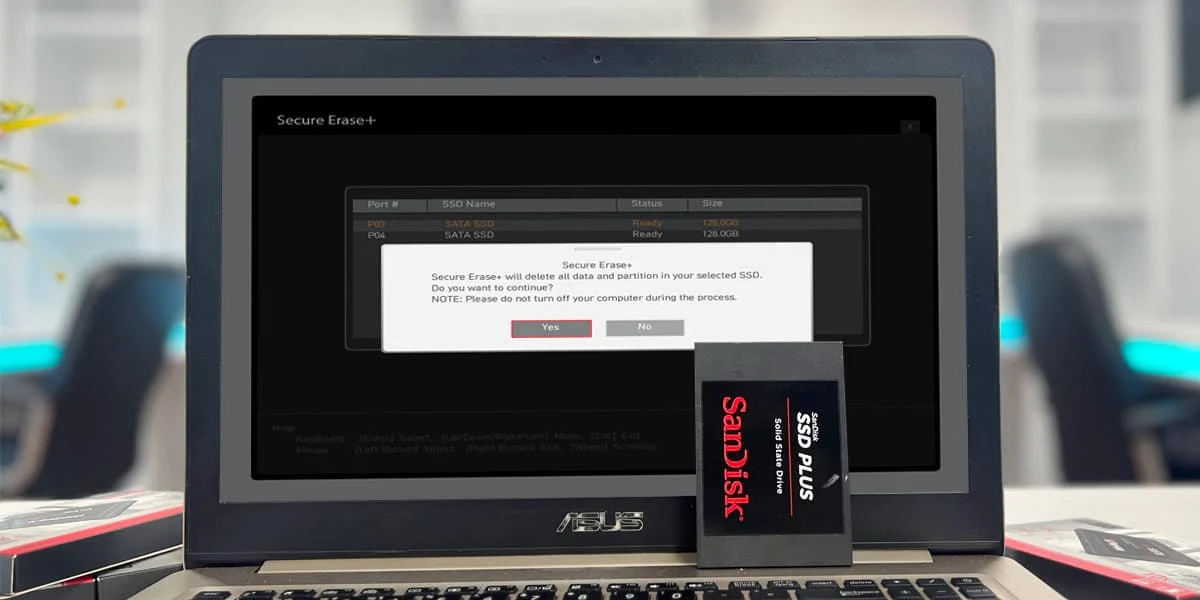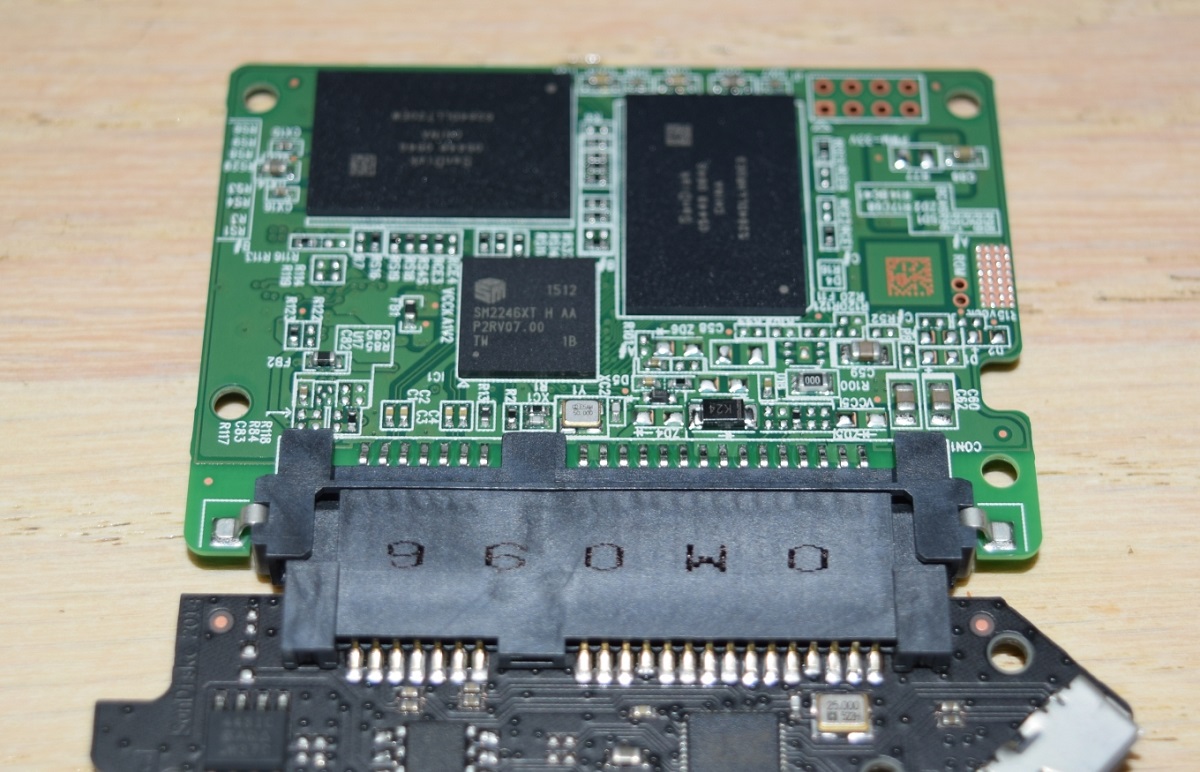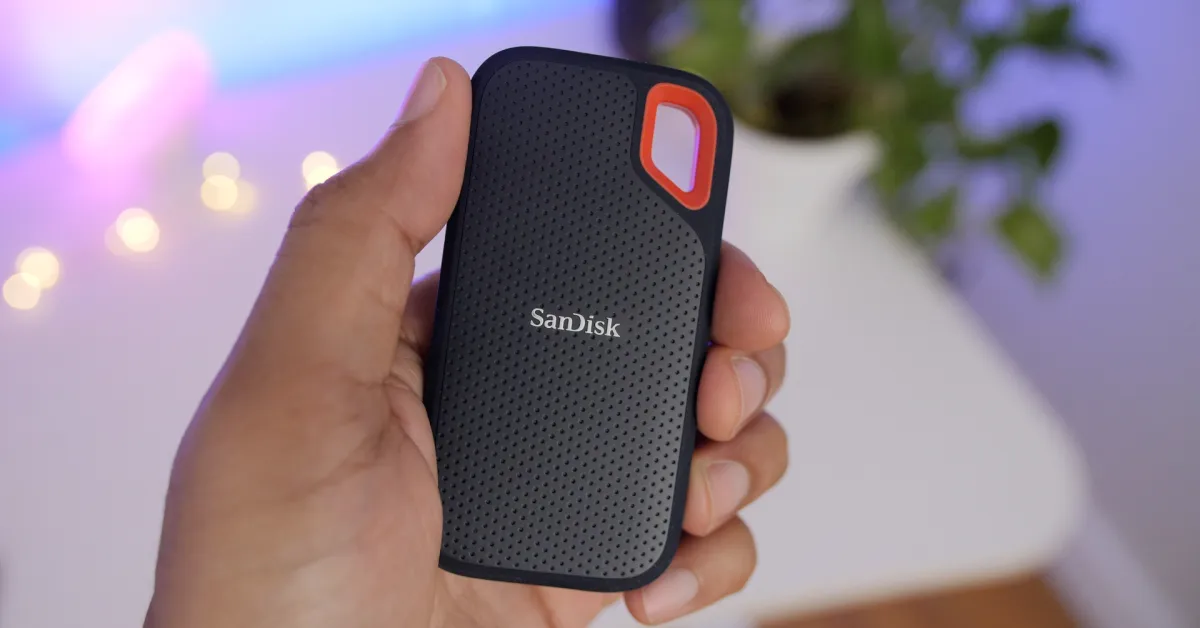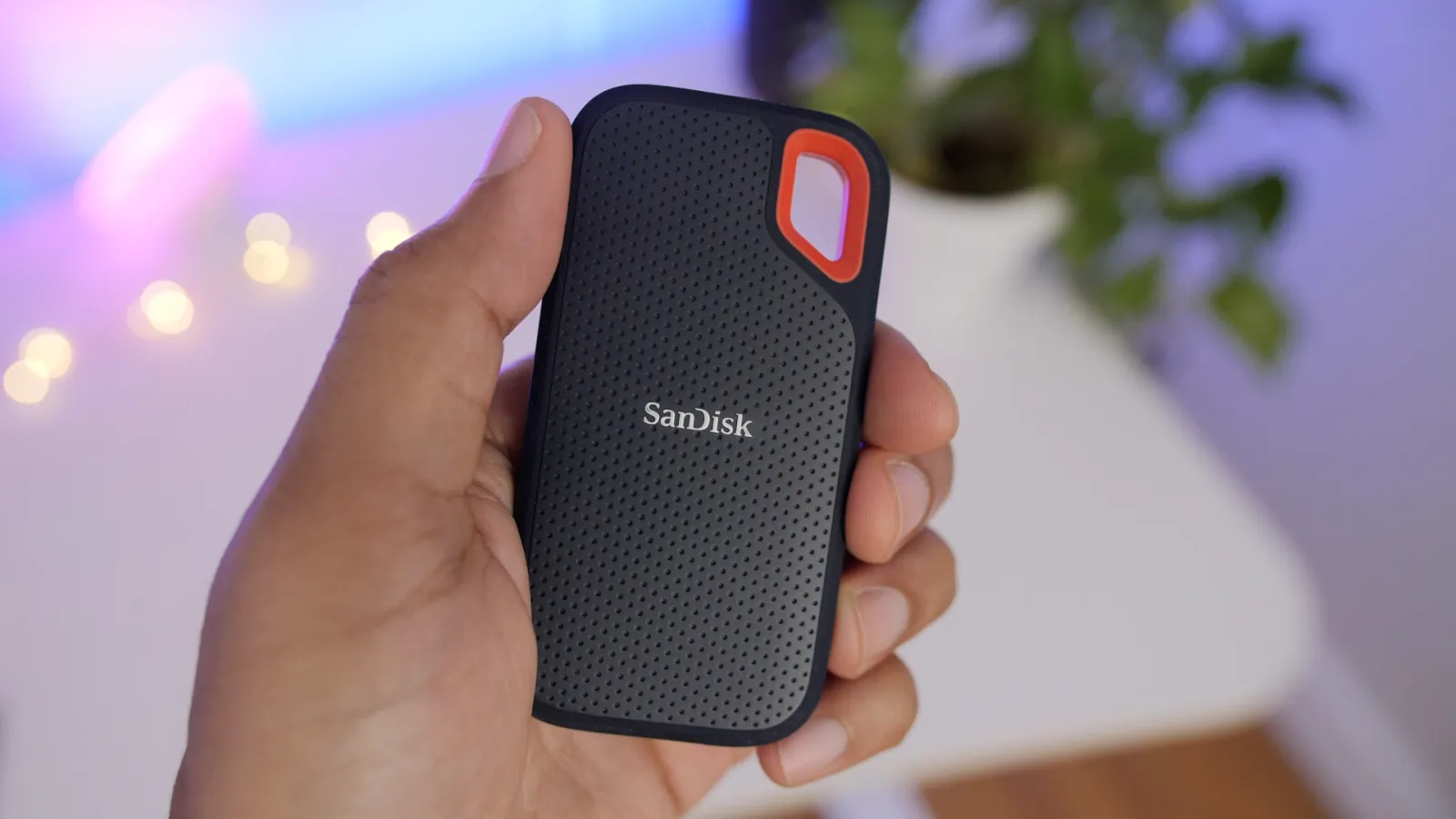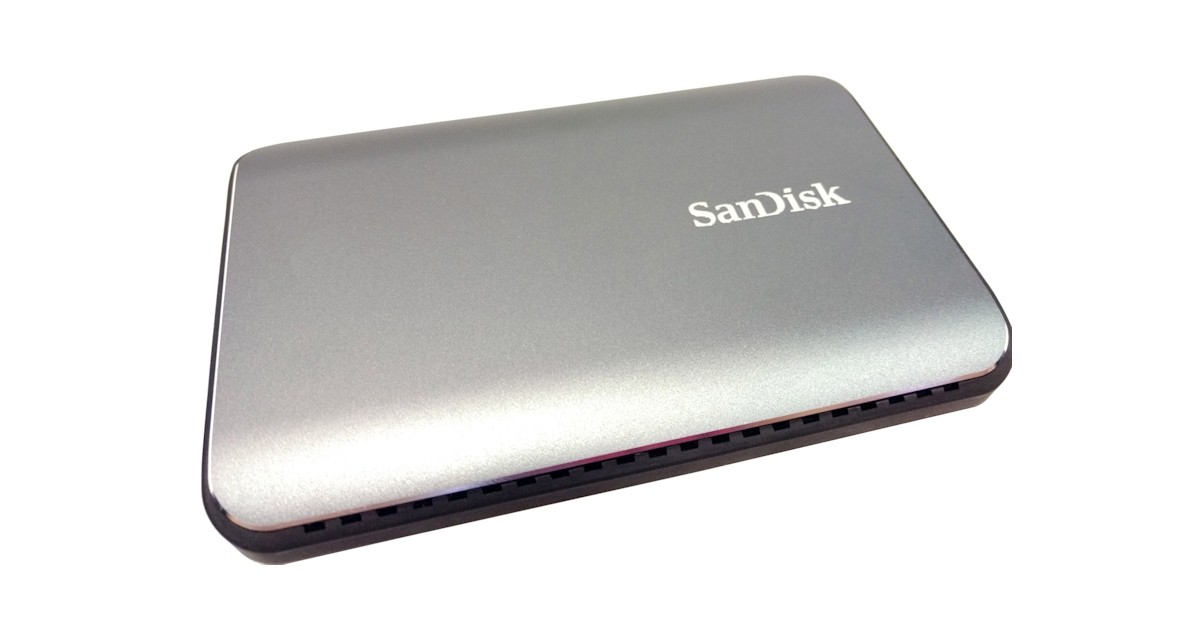Introduction
Welcome to this comprehensive guide on how to format a Sandisk SSD for Mac. If you recently acquired a Sandisk SSD and need to prepare it for use on your Mac, this article will provide step-by-step instructions to help you through the formatting process.
Sandisk SSDs are renowned for their reliability and high performance, making them an excellent choice for Mac users who require fast and efficient storage solutions. However, before you can start utilizing your Sandisk SSD on your Mac, it is essential to format it properly to ensure compatibility and optimal performance.
Formatting a Sandisk SSD on a Mac involves a few key steps that we will cover in this guide. First, we’ll discuss the preparations you need to make before formatting, including data backup and software requirements. Then, we’ll dive into the actual process of formatting the Sandisk SSD, followed by a guide on partitioning the drive. Lastly, we’ll walk you through restoring your data onto the newly formatted SSD so you can pick up where you left off.
By adhering to the instructions outlined in this guide, you can ensure that your Sandisk SSD is formatted correctly and ready for seamless integration with your Mac. So, let’s get started with the first step: preparing for formatting!
Step 1: Preparing for Formatting
Before formatting your Sandisk SSD for use on your Mac, it’s important to undertake a few crucial preparations. These steps will help ensure the process goes smoothly and that you don’t accidentally lose any valuable data. Follow the instructions below to get started:
- Backup your data: Before formatting your Sandisk SSD, it’s essential to create a backup of all the data stored on it. This step is important as formatting will erase all the existing data on the drive. You can back up your data using various methods, such as transferring files to an external hard drive, using cloud storage services, or creating a disk image.
- Check system requirements: Verify that your Mac meets the system requirements for formatting the Sandisk SSD. You may need to update your operating system or firmware to ensure compatibility with the SSD. Refer to the Sandisk SSD documentation or their website for specific compatibility information.
- Disconnect unnecessary devices: To avoid any potential conflicts during the formatting process, it’s advisable to disconnect any unnecessary devices connected to your Mac. This includes external drives, printers, smartphones, and other USB devices. Keeping only the essential peripherals connected will help streamline the formatting process.
- Enable TRIM (optional): TRIM is a command that helps maintain the long-term performance and lifespan of SSDs. While most modern Macs automatically enable TRIM for internal SSDs, you may need to verify and enable it manually for external SSDs. Consult Apple’s official support documentation or online forums for instructions on enabling TRIM on your specific Mac model.
- Ensure a stable power source: It is crucial to connect your Mac to a reliable power source during the formatting process. This step will minimize the risk of any power interruptions that could potentially damage the SSD or result in data loss.
By completing these preparations, you’ll be well-equipped to proceed with formatting your Sandisk SSD on your Mac. Taking the time to backup your data, check system requirements, disconnect unnecessary devices, enable TRIM (if applicable), and secure a stable power source will ensure a seamless and successful formatting experience. Once you’re ready, let’s move on to the next step: formatting the Sandisk SSD!
Step 2: Formatting the Sandisk SSD
Now that you’ve completed the necessary preparations, it’s time to proceed with formatting your Sandisk SSD. This step will help initialize the drive and prepare it for use on your Mac. Here’s a guide to formatting your Sandisk SSD:
- Connect the SSD: Start by connecting your Sandisk SSD to your Mac using the appropriate cable or adapter. Ensure a secure connection to avoid any interruptions during the formatting process.
- Open Disk Utility: Launch Disk Utility, which can be found in the Utilities folder within the Applications folder. You can also access it by searching for “Disk Utility” using the Spotlight search function.
- Select the Sandisk SSD: In Disk Utility, you should see a list of drives and volumes connected to your Mac. Locate the Sandisk SSD in the sidebar and select it.
- Choose the format: Once the Sandisk SSD is selected, click on the “Erase” tab located at the top of the Disk Utility window. Here, you can choose the format for your SSD. For compatibility with Mac, it is recommended to select “Mac OS Extended (Journaled)” as the format. You can also rename the SSD if desired.
- Start the formatting process: Double-check that you have selected the correct drive and format settings. Once you’re ready, click on the “Erase” button. A warning message will appear, notifying you that all data on the drive will be deleted. Confirm your selection by clicking “Erase” again.
- Wait for the process to complete: Disk Utility will now format the Sandisk SSD according to your selected format. The time it takes to complete the process may vary depending on the size of the drive. Once the formatting is finished, you will see a confirmation message.
With these steps completed, you have successfully formatted your Sandisk SSD on your Mac. The drive is now ready to be partitioned and used for storing data. In the next step, we will guide you through the process of partitioning the Sandisk SSD to optimize its usage. Let’s move on to step 3!
Step 3: Partitioning the Sandisk SSD
After formatting your Sandisk SSD, you may want to partition it into multiple sections to better organize and utilize the available storage space. Partitioning allows you to create separate volumes on the SSD, each with its own file system and allocation of space. Here’s how you can partition your Sandisk SSD:
- Open Disk Utility: Launch Disk Utility on your Mac, if it is not already open, by navigating to the Utilities folder within the Applications folder.
- Select the Sandisk SSD: In Disk Utility, locate the Sandisk SSD in the sidebar and select it.
- Choose the Partition tab: Click on the “Partition” tab located at the top of the Disk Utility window.
- Add a new partition: To add a new partition, click on the “+” button. You can set the size for the new partition by adjusting the slider or entering a specific value. Give the partition a suitable name and select the desired format.
- Adjust the partition layout: If you want to create multiple partitions, repeat the previous step to add additional partitions. Use the handle in the middle to adjust the size of the partitions according to your requirements.
- Apply the changes: Before proceeding with the partitioning process, double-check the layout and settings of each partition. Once you’re satisfied, click on the “Apply” button to confirm and apply the changes.
- Wait for the partitioning process: Disk Utility will now create the partitions on the Sandisk SSD according to your specified settings. The time it takes may vary depending on the size and number of partitions.
- Verify the newly created partitions: Once the partitioning process is complete, you will see the newly created partitions listed in the sidebar of Disk Utility. Each partition will have its own volume and can be managed independently.
Partitioning your Sandisk SSD allows you to create separate areas for different purposes, such as a dedicated partition for system files, media storage, or backup. By organizing your SSD into multiple partitions, you can optimize its usage and easily manage your data. With the partitioning process completed, let’s move on to the final step: restoring data on the Sandisk SSD!
Step 4: Restoring Data on the Sandisk SSD
Once you have successfully formatted and partitioned your Sandisk SSD, you’re ready to restore your data onto the newly prepared drive. Restoring your data allows you to transfer your files, documents, and applications back to the Sandisk SSD for easy access and use. Follow the steps below to restore your data:
- Restore from backup: If you created a backup of your data before formatting the Sandisk SSD, now is the time to restore it. Connect your backup storage device or access your cloud storage service to retrieve the data that you previously backed up. Use the appropriate method to transfer the files back onto the Sandisk SSD.
- Drag and drop: Another way to transfer your files onto the Sandisk SSD is by manually dragging and dropping them from their current location to the desired partition on the SSD. Open Finder, navigate to the files you want to transfer, and drag them over to the appropriate partition on the Sandisk SSD.
- Reinstall applications: If you had any applications installed on the Sandisk SSD before formatting, you’ll need to reinstall them. Locate the installation files or download them from the original source and follow the installation instructions provided by the application.
- Verify data integrity: After restoring your data, it’s crucial to verify that all files and applications are intact and functioning as expected. Take some time to check your files, open applications, and ensure that nothing is missing or corrupted.
- Organize and clean up: As you restore your data, take the opportunity to organize your files and delete any unnecessary or duplicate items. This helps improve the efficiency and usability of your Sandisk SSD.
By following these steps, you can safely and effectively restore your data onto the Sandisk SSD. Whether you’re transferring files from a backup or manually dragging and dropping, ensure that all your important data is securely stored on the SSD for future use.
Congratulations! You have successfully completed all the necessary steps to format, partition, and restore data on your Sandisk SSD for your Mac. You can now enjoy the benefits of fast and reliable storage, optimized for your specific needs. Remember to regularly back up your data and keep your Sandisk SSD well-maintained to ensure its longevity and optimal performance.
Conclusion
Formatting a Sandisk SSD for use on your Mac is a crucial step to ensure compatibility, performance, and organization of your storage device. In this guide, we covered the step-by-step process of preparing, formatting, partitioning, and restoring data on a Sandisk SSD. By following these instructions, you can effectively set up your Sandisk SSD and optimize its usage on your Mac.
We began by emphasizing the importance of backing up your data before formatting the SSD, as formatting erases all existing data. We also highlighted the significance of checking system requirements, disconnecting unnecessary devices, enabling TRIM (if applicable), and ensuring a stable power source during the formatting process.
We then proceeded to guide you through the formatting process using Disk Utility, selecting the appropriate format, and erasing the drive. Additionally, we covered the partitioning process, allowing you to create multiple sections on the Sandisk SSD for better organization and utilization.
In the final step, we discussed restoring data to the Sandisk SSD, whether from a backup or by manually transferring files. We also mentioned the importance of verifying data integrity, reinstalling applications, and organizing your files on the SSD.
By following these steps, you can effectively format, partition, and restore data on your Sandisk SSD, ensuring optimal performance and convenience on your Mac.
Remember, regular data backups and maintenance of your Sandisk SSD are crucial for its longevity and continued performance. With proper care and attention, your Sandisk SSD will continue to serve as a reliable and efficient storage solution for your Mac.
We hope this guide has been helpful and informative. Should you encounter any issues or have further questions, consult the Sandisk SSD documentation or reach out to Sandisk customer support for assistance. Enjoy the enhanced performance and storage capabilities that your Sandisk SSD brings to your Mac!







